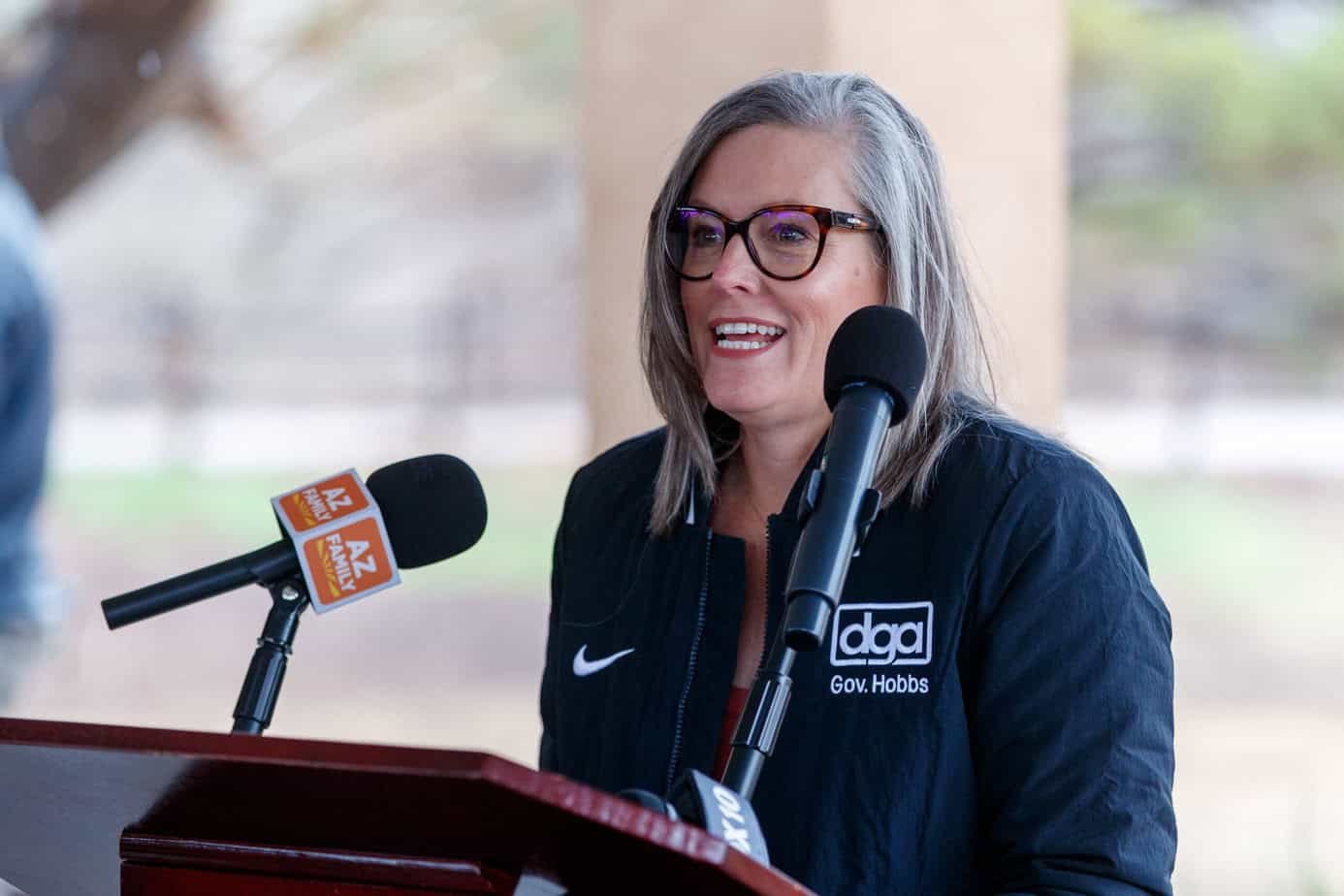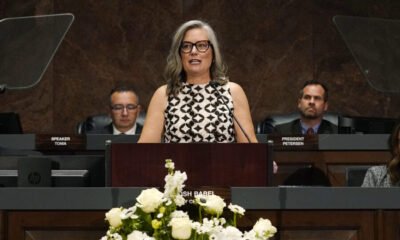Business
Hobbs and USFS Forge New Pact to Combat Fire Risks

Arizona Governor Katie Hobbs [D] signed a non-binding Shared Stewardship Agreement with the federal government on Thursday, October 10. This agreement aims to foster collaboration between state and federal agencies in order to reduce wildfire risks in communities throughout the state.
“Arizona doesn’t have a wildfire ‘season’ anymore,” Governor Hobbs stated. She emphasized the year-round threat of wildfires, noting that the danger escalates annually. The state has already faced nearly 2,000 wildfires this year, involving thousands of partners across various levels of government.
The newly established agreement will facilitate an annual planning meeting between the U.S. Forest Service and the Arizona Department of Forestry and Fire Management. This meeting will focus on coordinating efforts for prescribed burns, fire prevention, and post-fire restoration initiatives.
Homer Wilkes, Undersecretary for Natural Resources and Environment, remarked on the ongoing commitment to forest health. “We want to increase the pace and scale of forest health restoration treatments,” he pointed out. This agreement is seen as a continuation of previous collaborative efforts that began in 2018.
The agreement also expands the scope of the Forest Service’s Good Neighbor Authority in Arizona. This will allow partnerships on forestry projects, which are set to cover 13 states. In Arizona, projects will include work around the Fred Lawrence Whipple Observatory and fuel reduction initiatives.
“We’re dedicated to enhancing forest restoration efforts,” Arizona State Forester Tom Torres explained. He noted that the state aims to treat 40,000 acres annually by Fiscal Year 2025-2026.
Governor Hobbs highlighted the importance of fuel reduction projects, stating they would ensure a stable timber supply for the forestry industry. Torres added that these initiatives represent a public-private venture where private companies take on the majority of the implementation work.
Under the new agreement, forestry businesses can now access larger areas of public lands, extending up to 5,000 acres or more. This change is expected to foster greater competition and reduce uncertainty for private enterprises.
The agreement also outlines plans for the state, Forest Service, and Salt River Project to set ten-year goals for fuel reduction and cost-sharing initiatives on public lands. Torres praised the Salt River Project for its role in enhancing collaborative efforts, citing over 90,000 acres involved in existing treatment agreements.
Additionally, the Shared Stewardship Agreement establishes a shared transportation agreement to improve access for forest operators. This will streamline the process of moving wood products from forests to their destinations. “We aim to create a comprehensive biomass disposal and utilization plan within the next 18 months,” Hobbs said.






![Members of the Arizona House of Representatives vote during a third reading of nearly three dozen bills at the Arizona State Capitol on March 4, 2025. [Monica D. Spencer]](https://arizonanews.org/wp-content/uploads/2025/06/SR-347-Secures-53M-in-Third-State-Budget-Draft-Awaiting-400x240.jpg)
![Members of the Arizona House of Representatives vote during a third reading of nearly three dozen bills at the Arizona State Capitol on March 4, 2025. [Monica D. Spencer]](https://arizonanews.org/wp-content/uploads/2025/06/SR-347-Secures-53M-in-Third-State-Budget-Draft-Awaiting-80x80.jpg)










